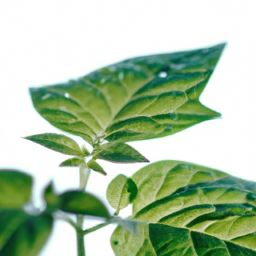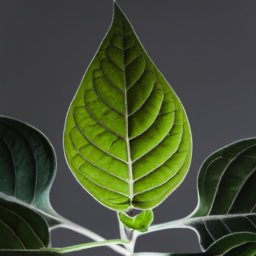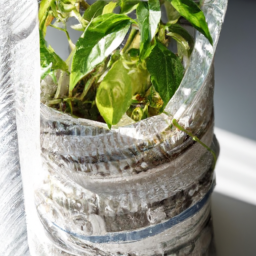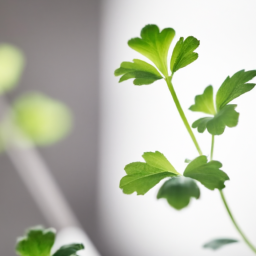
Are you a plant lover looking to achieve lush greenery in your indoor garden? Look no further than top-notch grow lights! In this blog post, we will explore the benefits of using grow lights for plants and how they can help you create a thriving oasis right in your own home. Whether you’re a seasoned gardener or just starting out, understanding the importance of proper lighting is key to ensuring your plants receive the nutrients they need to flourish. So, let’s dive in and discover how grow lights can be the game-changer your plants have been waiting for.
Grow Light for Plant: Achieve Lush Greenery with Top-Notch Grow Lights
Importance of Grow Lights for Indoor Plant Growth
Indoor gardening has gained immense popularity in recent years, allowing plant enthusiasts to enjoy the beauty of lush greenery even in limited spaces. However, one of the biggest challenges faced by indoor gardeners is providing adequate light to their plants. This is where grow lights come to the rescue. In this article, we will explore the importance of grow lights for indoor plant growth and how they can help you achieve thriving greenery.
Understanding the Role of Light in Plant Growth
Plants rely on light for photosynthesis, the process through which they convert light energy into chemical energy, enabling them to produce food and grow. In an outdoor environment, plants receive natural sunlight, which provides a balanced spectrum of light necessary for their growth. However, indoors, the intensity and quality of light can be insufficient for optimal plant development.
Growing plants indoors without adequate light can result in weak and leggy growth, pale leaves, and overall poor health. This is where grow lights step in to provide the necessary light spectrum and intensity required for plants to thrive.
Now, let’s delve deeper into the reasons why grow lights are crucial for indoor plant growth.
1. Supplementing Natural Light
While natural sunlight is the best source of light for plants, it may not always be accessible indoors. Factors like limited sunlight exposure, shady locations, or living in regions with long winters can hinder plant growth. Grow lights act as a supplement to natural light, providing plants with the essential light they need to flourish.
By strategically placing grow lights near your plants, you can ensure they receive a consistent and adequate light source throughout the day, regardless of the external lighting conditions. This enables you to create an optimal environment for your indoor plants, mimicking the natural sunlight they would receive outdoors.
2. Customizable Light Spectrum
Grow lights come in various types, each emitting a specific spectrum of light. This allows you to customize the light spectrum based on the specific needs of your plants. Different stages of plant growth require different wavelengths of light, and grow lights can be adjusted accordingly.
For instance, during the vegetative stage, plants benefit from blue light, which promotes leafy growth. On the other hand, during the flowering stage, red light is essential for stimulating flower production. By using grow lights with adjustable spectrums, you can provide your plants with the right light at each stage of their growth cycle, ensuring optimal development.
3. Extended Growing Seasons
One of the major advantages of using grow lights is the ability to extend the growing season for your plants. With natural sunlight, plant growth is limited to the available daylight hours, which can be significantly shorter during certain times of the year.
By using grow lights, you can provide your plants with extended periods of light, allowing them to grow and thrive even during the darker months. This is particularly beneficial for those who live in regions with short growing seasons or for individuals who want to enjoy fresh produce year-round.
In conclusion, grow lights play a vital role in indoor plant growth by supplementing natural light, providing customizable light spectrums, and extending the growing seasons. By incorporating top-notch grow lights into your indoor gardening setup, you can achieve lush greenery and ensure the healthy development of your plants. So, go ahead and give your indoor garden the light it deserves!

Factors to Consider When Choosing the Best Grow Light for Plants
Introduction
When it comes to growing plants indoors, providing them with the right amount and quality of light is crucial for their growth and overall health. This is where grow lights come into play. Grow lights are artificial lighting systems designed to provide plants with the necessary light spectrum for photosynthesis. However, with the wide variety of grow lights available in the market, choosing the best one for your plants can be overwhelming. In this guide, we will walk you through the key factors to consider when selecting the best grow light for your plants.
Light Spectrum
The first and most important factor to consider when choosing a grow light is the light spectrum it emits. Plants require different wavelengths of light for different stages of growth. The two primary types of light spectrum emitted by grow lights are full spectrum and specific spectrum.
Full spectrum grow lights mimic natural sunlight and provide a balanced combination of red, blue, and white light. These lights are ideal for all stages of plant growth, from seedlings to flowering. On the other hand, specific spectrum grow lights focus on specific wavelengths of light that are most beneficial for particular stages of plant growth. For example, blue light promotes vegetative growth, while red light stimulates flowering and fruiting.
Deciding between full spectrum and specific spectrum grow lights depends on the type of plants you are growing and the growth stage they are in. If you are growing a variety of plants or want a versatile option, a full spectrum grow light is the way to go. However, if you have specific plants with specific light requirements, opting for a specific spectrum grow light can be more beneficial.
Light Intensity
Light intensity, measured in lumens or lux, refers to the brightness of the grow light. Different plants have different light intensity requirements, and it is essential to choose a grow light that can provide the right amount of light for your plants.
For seedlings and young plants, lower light intensity is sufficient. As the plants mature, they require higher light intensity to support their growth and development. Leafy greens and herbs typically require lower light intensity, while fruiting plants like tomatoes and peppers need higher light intensity.
When selecting a grow light, consider the coverage area and the distance at which the light should be placed from the plants. High-intensity discharge (HID) lights, such as metal halide and high-pressure sodium lights, are known for their high light output. However, they also generate more heat and may require additional cooling systems. Light-emitting diode (LED) grow lights, on the other hand, provide high light intensity while being energy-efficient and producing less heat.
Energy Efficiency
Energy efficiency is an important consideration when choosing a grow light, especially if you are planning to use it for long hours every day. Traditional grow lights, such as HID lights, are known to consume a significant amount of energy and generate heat. This not only increases your electricity bills but also requires additional cooling systems to maintain the optimal temperature for plant growth.
LED grow lights, on the other hand, are highly energy-efficient and can save you money in the long run. They convert a higher percentage of electricity into usable light, resulting in less heat production. LED grow lights also have a longer lifespan compared to traditional grow lights, reducing the need for frequent replacements.
When comparing different grow lights, look for their energy efficiency rating, typically indicated as the photosynthetic photon flux density (PPFD) or the micromoles per second (µmol/s). The higher the PPFD or µmol/s, the more efficient the grow light is in converting electricity into usable light for plant growth.
Conclusion
Choosing the best grow light for your plants involves considering various factors such as the light spectrum, light intensity, and energy efficiency. Understanding the specific light requirements of your plants and their growth stages is crucial in making an informed decision. Whether you opt for a full spectrum grow light or a specific spectrum one, make sure to select a grow light that can provide the right amount and quality of light for your plants to achieve lush greenery and promote healthy growth.

Grow Light for Plant: Achieve Lush Greenery with Top-Notch Grow Lights
3 Tips for Maximizing Plant Growth with High-Quality Grow Lights
When it comes to growing plants indoors, using high-quality grow lights can make all the difference in achieving lush greenery. In this guide, we will provide you with three valuable tips to maximize plant growth using top-notch grow lights.
1. Choosing the Right Grow Light
The first step in maximizing plant growth with grow lights is selecting the right type of light for your specific plants. There are various options available, including fluorescent, LED, and high-intensity discharge (HID) lights. Each type has its own benefits and considerations.
Fluorescent lights are affordable and energy-efficient, making them a popular choice for beginner indoor gardeners. They emit a broad spectrum of light that is suitable for most plants. LED lights, on the other hand, are more expensive but offer longer lifespans and customizable light spectrums. They are ideal for specific plant growth stages.
HID lights are the most powerful and efficient grow lights available. They are commonly used by experienced gardeners and commercial growers. However, they require additional equipment such as ballasts and cooling systems. Consider your budget, plant requirements, and available space before deciding on the right grow light.
2. Determining the Correct Light Intensity and Duration
Once you have chosen the appropriate grow light, it is crucial to understand the correct light intensity and duration for your plants. Light intensity is measured in foot-candles or lux, and it determines the amount of light reaching your plants. Different plants have varying light intensity requirements, so it is essential to research and adjust accordingly.
Seedlings and young plants generally require lower light intensity, while mature plants need higher levels to support photosynthesis. You can adjust the light intensity by placing the grow lights closer or further away from the plants. Be careful not to exceed the recommended intensity levels, as it may lead to light burn or stunted growth.
Additionally, the duration of light exposure also affects plant growth. Most plants need around 12 to 16 hours of light per day during their vegetative stage and 8 to 12 hours during the flowering or fruiting stage. Use timers to ensure consistent and appropriate light cycles for optimal growth.
3. Positioning and Coverage
The positioning and coverage of your grow lights play a crucial role in maximizing plant growth. Proper positioning ensures that all parts of the plant receive adequate light for balanced growth. Hanging the lights too high or too low can result in uneven light distribution and negatively impact plant development.
As a general rule, place the grow lights about 6 to 12 inches above seedlings and young plants, gradually increasing the height as they grow taller. For mature plants, maintain a distance of 12 to 24 inches to provide sufficient coverage. Adjust the height if you notice signs of light deficiency or excess, such as elongated stems or burned leaves.
Consider the coverage area of your grow lights as well. Ensure that the light emitted covers the entire plant canopy evenly. If you have multiple plants, position the lights accordingly to avoid shading or overcrowding. Regularly monitor the growth and adjust the positioning and coverage as needed.
By following these three tips, you can maximize plant growth with high-quality grow lights. Remember to choose the right type of grow light, determine the correct light intensity and duration, and position the lights properly for optimal coverage. With the right lighting setup, you can achieve lush greenery and thriving indoor plants.
Key Takeaways of this article
If you’re a plant lover like me, you understand the struggle of keeping your indoor plants healthy and thriving. Sometimes, no matter how much sunlight you provide, it just isn’t enough. That’s where grow lights come in. These nifty devices are designed to mimic the natural light spectrum, providing your plants with the necessary light they need to grow and flourish.
When it comes to choosing the right grow light for your plants, it’s essential to invest in a top-notch product. High-quality grow lights offer a wide range of benefits, including increased growth rates, healthier foliage, and vibrant blooms. They come in various types, such as fluorescent, LED, and HID lights, each with its own advantages. LED lights, for example, are energy-efficient and long-lasting, making them a popular choice among indoor gardeners. So, if you’re looking to achieve lush greenery and breathtaking blooms, it’s time to consider adding a top-notch grow light to your plant care routine.
Top FAQs:
Q1: What are grow lights and why are they important for plant growth?
A1: Grow lights are artificial light sources designed to provide the necessary light spectrum for plants to grow effectively indoors. They are crucial for plant growth because they mimic natural sunlight and provide the right amount and type of light that plants need for photosynthesis, which is essential for their growth and development.
Q2: What are the benefits of using grow lights for indoor plants?
A2: Using grow lights for indoor plants offers several benefits. Firstly, they allow you to grow plants in areas with limited or no access to natural sunlight. Secondly, grow lights provide consistent and controlled lighting conditions, ensuring optimal growth throughout the year. Additionally, they enable you to extend the growing season, allowing you to cultivate plants even during winter. Lastly, grow lights can be adjusted to emit specific light wavelengths, promoting better plant growth and flowering.
Q3: What types of grow lights are available in the market?
A3: There are various types of grow lights available, each with its own advantages. The most common types include fluorescent lights, LED lights, and high-intensity discharge (HID) lights. Fluorescent lights are affordable and suitable for small-scale indoor gardening. LED lights are energy-efficient, long-lasting, and offer a wide range of light spectrums. HID lights are powerful and ideal for large-scale indoor gardens.
Q4: How do I choose the right grow light for my plants?
A4: When choosing a grow light, consider factors such as the type of plants you want to grow, the size of your growing area, and your budget. Different plants have different light requirements, so it’s essential to choose a grow light that provides the appropriate light spectrum. Additionally, consider the wattage and coverage area of the grow light to ensure it can adequately illuminate your plants. Lastly, consider the energy efficiency and lifespan of the grow light to make a cost-effective choice.
Q5: How far should grow lights be placed from plants?
A5: The distance between grow lights and plants depends on the type of light and the growth stage of the plants. As a general guideline, fluorescent lights should be placed 6-12 inches away, LED lights 12-24 inches away, and HID lights 24-48 inches away. However, it’s crucial to refer to the manufacturer’s guidelines for specific recommendations. Regularly monitor your plants for any signs of light stress or heat damage and adjust the distance accordingly.
Dr. Olivia Green is a botanist with over two decades of experience in indoor plant cultivation. She holds a Ph.D. in Plant Biology and has dedicated her career to researching plant behavior in controlled environments. Dr. Green is passionate about helping plant enthusiasts master the art of indoor gardening through her extensive knowledge and practical insights.


